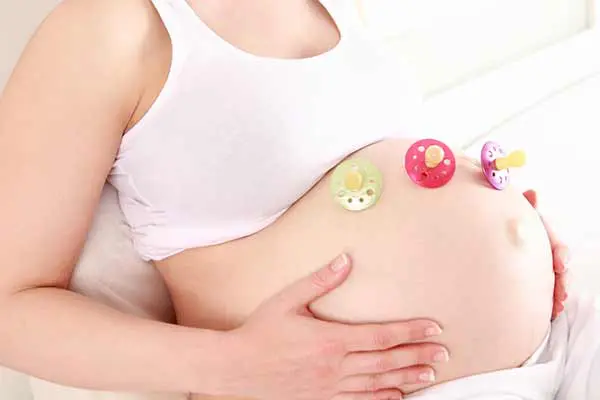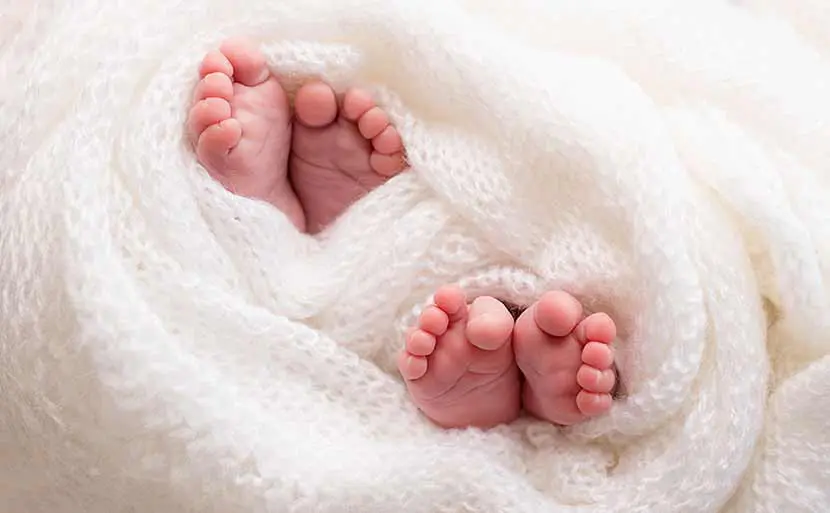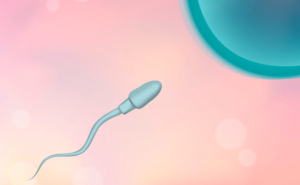Introduction
Multiple pregnancies and having children close in age pose risks to the mother.
Multiple pregnancies refer to the condition where two or more babies are conceived simultaneously. This includes twins, triplets, and beyond. It can be detected around the 8th week of pregnancy through ultrasound.
The causes of multiple pregnancies are not fully understood, but infertility treatments are identified as one contributing factor.
Due to the widespread use of infertility treatments, the number of multiple pregnancies has increased in recent years.
Children born in consecutive years from the same mother are referred to as having children close in age. These children are typically one year apart in terms of age. To be considered having children close in age, the second child must be born before the first child turns 1 year and 11 months old. It doesn’t necessarily mean they have a one-grade difference since it depends on the birthdates of the children.
For example, let’s consider a scenario where the first child is born around April or May. If the second pregnancy occurs immediately, and the second child is born by April 1 of the following year, they will be considered having children close in age, as they are in the same grade.
Let’s explore the risks associated with multiple pregnancies and having children close in age for the mother. We hope this information will be helpful for mothers in their pregnancy journey and preparations for the upcoming babies.
Maternal Risks of Multiple Pregnancies
Multiple pregnancies are considered to be more burdensome on the mother compared to a single pregnancy※1
- Severe morning sickness
- Premature birth
- Pregnancy-induced hypertension
- Gestational diabetes
- Vanishing twin
Compared to a singleton pregnancy, carrying two or more fetuses places a greater strain on the mother’s body. In the case of the babies, those from multiple pregnancies tend to be smaller at birth compared to singletons. However, it is noted that their developmental trajectory after birth remains unchanged. It is believed that by the age of 3 to 6, babies born from singleton pregnancies catch up with the growth of those born from multiple pregnancies.
※1 Singleton Pregnancy: A pregnancy where only one fetus is conceived per instance of pregnancy, resulting in the mother carrying one baby.
Morning Sickness
Nausea during multiple pregnancies is often considered to be more severe. Morning sickness, which occurs around the fifth week of pregnancy, is a disturbance in the digestive system.
Specific symptoms include:
- Loss of appetite
- Nausea
- Vomiting
Many pregnant women experience symptoms of morning sickness from around week 12 to week 16 of pregnancy. However, there is individual variation, and some pregnant women may continue to experience morning sickness even in the later stages of pregnancy.
Reasons for Severe Morning Sickness
Compared to a singleton pregnancy, multiple pregnancies involve
- Increasing in the secretion of hormones (chorionic gonadotropin)
- Need for the uterus to enlarge.
Chorionic gonadotropin (hCG) plays a role in maintaining pregnancy and is also a hormone that triggers morning sickness.
The reason for the enlargement of the uterus is to accommodate two or more babies. As the uterus expands, the toll on the mother’s body increases, leading to more severe morning sickness. For instance, the enlarged uterus can impede stomach movement, making nausea and vomiting more likely.

Preterm Birth
The increased risk of premature birth in multiple pregnancies is primarily due to the enlarged uterus. A larger uterus is more prone to promoting conditions that lead to preterm labor, a state just before actual premature birth.
Preterm birth refers to giving birth before the normal term, which is considered from 37 weeks 0 days to 41 weeks 6 days of pregnancy. It is within this period that a full-term birth is expected.
Premature birth poses higher risks of complications and infections for the baby. This is because the baby’s body is smaller and their organs and systems are immature.
Pregnancy-Induced Hypertension
Pregnancy-induced hypertension refers to the development of high blood pressure during pregnancy. The incidence rate is approximately 1 in 20 pregnant women. If pregnancy-induced hypertension occurs before 34 weeks of pregnancy, it is more likely to become severe.
As maternal symptoms, pregnancy-induced hypertension may present with
- High blood pressure
- Proteinuria
- Seizures or convulsions (pre-eclampsia or eclampsia)
- Cerebral hemorrhage
- Impaired function of the liver and kidneys
- HELLP syndrome
HELLP syndrome is a condition that tends to develop in the latter part of pregnancy. It involves the breakdown of red blood cells and a decrease in platelets. If treatment is delayed, it can be life-threatening.
Gestational Diabetes
Gestational diabetes is characterized by the development of diabetes during pregnancy, and symptoms of diabetes are present only during that period.
It’s crucial to note that individuals with pre-existing diabetes before pregnancy are not considered to have gestational diabetes. Furthermore, even if someone develops diabetes during pregnancy, they are not diagnosed with gestational diabetes if their diabetes does not improve after pregnancy.
The cause of gestational diabetes is associated with the increased difficulty in lowering blood sugar levels during multiple pregnancies compared to singleton pregnancies.
Exactly, the increase in insulin resistance ※2(a condition where insulin is less effective) in the body during pregnancy is a key factor.
※2 Insulin: A hormone produced by the pancreas that plays a role in lowering blood sugar levels.
Vanishing Twin Syndrome
Vanishing Twin refers to the phenomenon where one of the twins in the womb disappears, becoming undetectable.
The baby that is believed to have vanished has, in reality, passed away within the womb. After the demise, the baby is absorbed by the uterus, making it appear as if it has disappeared.
Vanishing Twin is often observed in the early stages of pregnancy, around 6 to 8 weeks. The occurrence rate of Vanishing Twin is approximately 15% among pregnant women with twins, which is the same rate as early miscarriage.
In recent years, with the increased use of in vitro fertilization, the probability of having twins has risen, leading to a corresponding increase in cases of Vanishing Twin.
Impact of Vanishing Twin Syndrome on the Mother and Baby
It is said that if the fetus is absorbed into the uterus, it does not have a significant impact on the mother’s body. The potential for impact arises when it comes to the baby that did not disappear in the case of vanishing twin.
Especially in the case of conceiving identical twins, there is a risk of
- Low birth weight
- Brain impairments
- Stillbirth
Monozygotic Twins
Identical twins have the same DNA, resulting in cases where their gender and appearance are identical. In the instance of identical twins, variations in the number of placentas and amniotic sacs can occur.
The placenta connects the baby to the mother, playing a role in providing nutrients to the baby. The number of placentas can be either one per person or one shared between two individuals.
The amniotic sac envelops the baby and can be likened to the baby’s room within the mother’s body. The configuration of this “baby’s room” can be either one per person or shared between two individuals.
Higher Risks with Monozygotic Twins
Sharing a single placenta and having only one shared room between the two individuals increases the risk. This condition is also referred to as monochorionic monoamniotic twins.
The increased risk is due to:
- Uneven distribution of nutrients
- Higher susceptibility to umbilical cord entanglement
Balancing the nutrition for both babies from a single placenta is challenging. For example, one baby may receive insufficient nutrients for the brain, while the other may experience low birth weight.
When the umbilical cord becomes entangled, it hinders the proper circulation of oxygen in the blood, increasing the likelihood of sudden infant death. Similar to a rubber hose, if the cord remains entangled, the flow of fluids within can be reduced or blocked. However, this often goes unnoticed until detected through examination, as it doesn’t cause significant effects on the mother’s body.

NIPT for Twins at Hiro Clinic
Hiro Clinic NIPT is one of the few clinics where NIPT for twins can be performed. Currently, not all hospitals or clinics offer this diagnosis.
Even in the case of a vanishing twin, Hiro Clinic NIPT provides the option to undergo NIPT.
Results of NIPT for Vanishing Twin Syndrome
In the NIPT for vanishing twins, it’s important to note that there is a higher likelihood of
- False positives
- False negatives
- Gender mismatch
compared to typical cases.
If the DNA of the vanished twin is still present, it can affect the results of NIPT.
This is particularly relevant in the case of dizygotic (fraternal) twins. In dizygotic twins, the DNA of the two babies is different.
For instance, let’s consider wanting to examine the DNA of the remaining baby. However, during the testing, if the collected DNA happens to be from the vanished baby, it becomes impossible to analyze the information of the surviving baby. Until the sequence of the DNA is examined, it is not possible to distinguish between the DNA of the two babies during the collection process, leading to potential issues in the test results.
Maternal Risks of Consecutive Pregnancies
The maternal risks of closely spaced pregnancies include
- Increased likelihood of preterm birth
- Elevated maternal mortality rate
Additionally, there is an increased risk of stillbirth. This is because conceiving again before the mother’s body has fully recovered from the stresses of childbirth can contribute to these risks.
If not breastfeeding, menstruation typically resumes 4 to 8 weeks after childbirth. Once menstruation resumes, the mother’s body is capable of becoming pregnant again.
However, to allow for adequate recovery of the maternal body, it is recommended to wait for a period of 12 to 18 months before attempting the next pregnancy.
Preterm Birth
In addition to the risk of preterm birth with closely spaced pregnancies, the risk increases as the maternal age advances.
However, even in women under 35 years old, the risk of preterm birth rises with closely spaced pregnancies. A pregnancy within 12 months of the previous delivery is considered to carry risks for women of all age groups.
Reducing the Risk of Preterm Birth with Spacing
A collaborative study between the University of British Columbia and the Harvard T.H. Chan School of Public Health investigated nearly 150,000 childbirth cases in Canada.
The results suggested that getting pregnant within 6 months of giving birth increased the likelihood of preterm birth by 8.5%. However, if the pregnancy occurred at 18 months postpartum, the risk of preterm birth decreased to 3.7%.
Maternal Mortality
Compared to pregnancies with longer intervals, pregnancies with closely spaced births are associated with an increased maternal mortality rate. This is because the damage to the mother’s body from childbirth may not fully recover within a year.
In a joint study by the University of British Columbia and the Harvard T.H. Chan School of Public Health, the timing between childbirth and the subsequent pregnancy was reported to be closely linked to maternal mortality rates.
For women aged 35 and older who became pregnant within 6 months after the previous childbirth, the mortality rate and harm risk were reported to be 1.2%, equivalent to 12 cases per 1000 pregnancies. However, waiting 18 months after the previous childbirth before becoming pregnant was associated with a decrease in the mortality rate to 0.5%.
Additionally, the World Health Organization (WHO) guidelines recommend waiting for a period of 18 months or more between childbirth and the next pregnancy.
Cases Where Consecutive Pregnancies Pose Risks
Pregnancy in consecutive years carries risks.
Additionally,
- Pregnant women who had a cesarean section in their previous delivery
- Advanced maternal age (35 years or older)
considered to have an increased risk. In this section, we will explain the risks associated with becoming pregnant in consecutive years under these two conditions.
After Cesarean Section
After a cesarean section, there is a possibility of uterine rupture when becoming pregnant with closely spaced births. For example, if there are contractions or if the uterus enlarges, there is a risk of uterine rupture. When uterine rupture occurs, it is considered to have a poor prognosis, with an 80% mortality rate for the baby and a 1-2% mortality rate for the mother.
Advanced Maternal Age
Advanced maternal age during childbirth places a significant burden on the mother. This is due to the added challenges of recovering bodily functions after childbirth, caring for the previously born baby, and the overlapping demands of a consecutive pregnancy.
Considering Advanced Maternal Age? Try NIPT (Non-Invasive Prenatal Testing)
The reason for recommending NIPT is to prepare for welcoming the baby.
In the case of advanced maternal age, there is a higher likelihood of babies being born with conditions. This is because older pregnant women have a higher probability of chromosomal abnormalities.
Chromosomal abnormalities can also be referred to as genetic abnormalities. When there is an abnormality in the genes, it can lead to the failure of the body to produce what should naturally be produced, or there may be insufficient quantities.
As a result, various disorders can occur. Down syndrome is a well-known example of a disorder caused by chromosomal abnormalities.
Conclusion
Multiple pregnancies and closely spaced births pose risks for both the mother and the child.
For the well-being of the unborn babies, we recommend NIPT. Multiple pregnancies and closely spaced births can increase the burden on the mother, making chromosomal abnormalities more likely.
NIPT is a test that can be done soon after confirming pregnancy through ultrasound. It is known as a minimally invasive prenatal genetic test with minimal risk to the fetus. This test can provide information about the potential for congenital conditions and determine the baby’s gender.
For parents who want to make thorough preparations for the well-being of their unborn babies, NIPT is a response to their needs.
【References】
- Japan Society of Obstetrics and Gynecology – Premature Birth and Threatened Premature Birth
- MSD Manual – Multiple Pregnancies
- National Center for Child Health and Development – Multiple Pregnancy Outpatient Clinic
- Japan Society of Obstetrics and Gynecology – Pregnancy-Induced Hypertension
- ACOG Clinical – Interpregnancy Care
- WHO – Report of a WHO Technical Consultation on Birth Spacing
Article Editorial Supervisor

岡 博史先生
【役職】
【資格】
【略歴】
【所属】
【SNS】
 中文
中文












